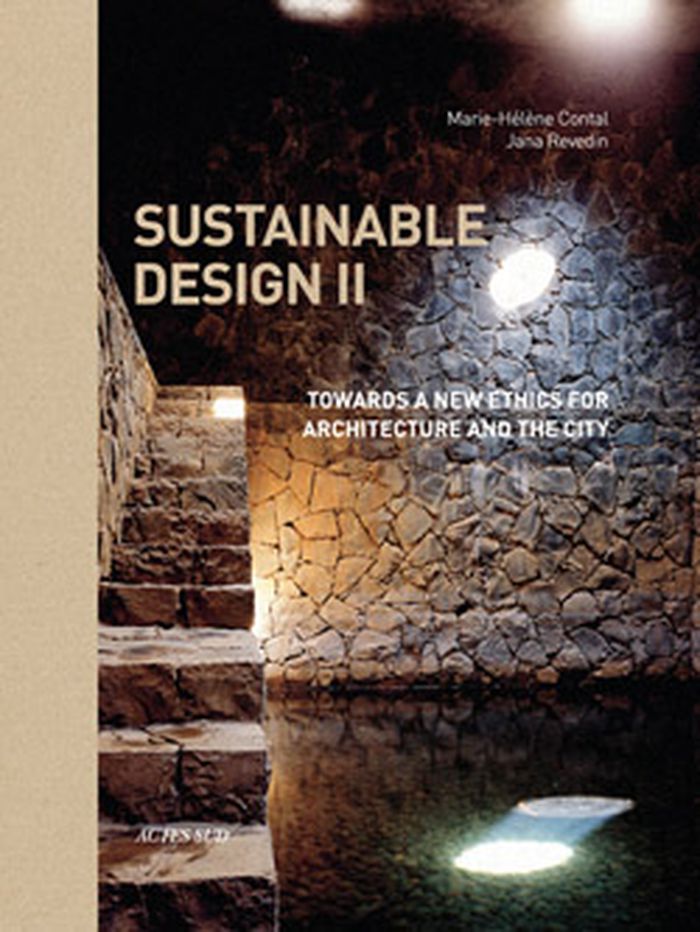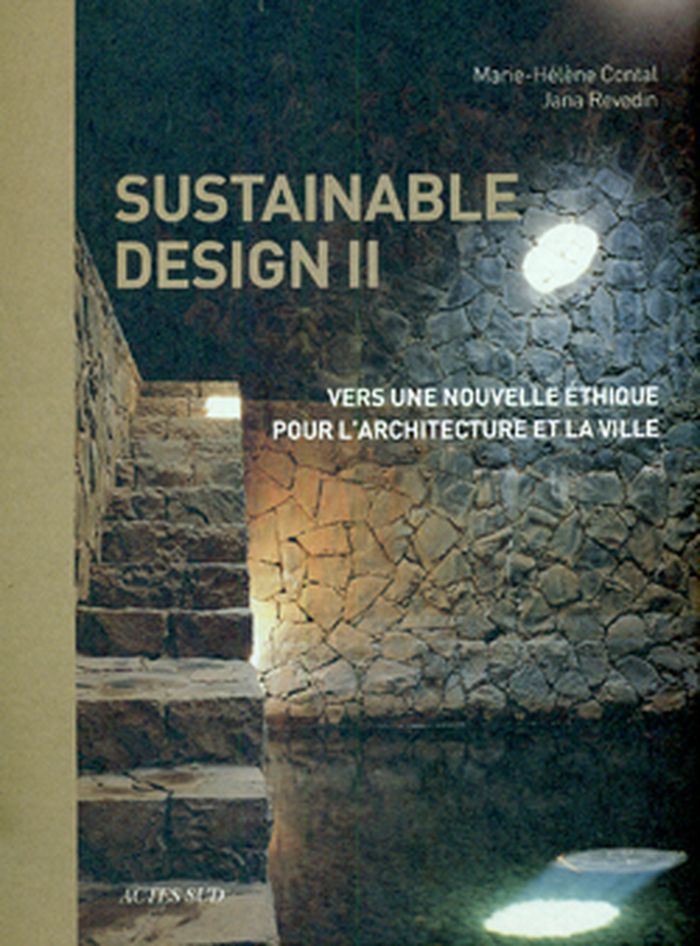$56.95
(disponible en magasin)
Résumé:
''Bedtime stories for architects'' is a compendium of texts, built works and graphic work by Peter Wilson. It offers glimpses of buildings by the German based office of BOLLES+WILSON, but it is not a monograph, it presents a cloud of discursive subjects and narratives, evidencing Wilson’s take on a wide range of academic, technical, cultural, and architectural issues. It(...)
Bedtime stories for Architects
Actions:
Prix:
$56.95
(disponible en magasin)
Résumé:
''Bedtime stories for architects'' is a compendium of texts, built works and graphic work by Peter Wilson. It offers glimpses of buildings by the German based office of BOLLES+WILSON, but it is not a monograph, it presents a cloud of discursive subjects and narratives, evidencing Wilson’s take on a wide range of academic, technical, cultural, and architectural issues. It has been called ‘tremendously cutting-edge’, perhaps because of the wry humor of the stories and Wilson’s witty and intelligent drawings – these extend to satirical portraits of – bankers, estate agents, property developers and a few OK people. Much of the book is organized alphabetically like a children’s book – A is for Albania, C is for Counterfactual Histories, G is for Guggenheim, M is for Malevich, O is for Olgiati, R is for Ritual. Counterfactual Histories (a concept from Borges) are paint-shop illustrated as surprising, poetic and enigmatic landscapes. ‘A Blue Review’ deconstructs a book on colour in architecture. Between the enigmatic graphic works are longer texts including Wilson’s extensive analysis of Studio Mumbai (first published in El Croquis), a longer investigation of the Swiss architect Valerio Olgiati and a history of Modernism in Wilson’s home country Australia.
Théorie de l’architecture
$40.00
(disponible sur commande)
Résumé:
In 2030, the world's population will be a staggering eight billion people. Of these, two-thirds will live in cities; most will be poor. With limited resources, this unbalanced growth will be one of the greatest challenges faced by societies across the globe. In the coming years, city authorities, urban planners, designers, economists and others will have to join forces to(...)
Uneven growth: tactical urbanisms for expanding megacities
Actions:
Prix:
$40.00
(disponible sur commande)
Résumé:
In 2030, the world's population will be a staggering eight billion people. Of these, two-thirds will live in cities; most will be poor. With limited resources, this unbalanced growth will be one of the greatest challenges faced by societies across the globe. In the coming years, city authorities, urban planners, designers, economists and others will have to join forces to avoid a major social and economic catastrophe and to ensure that these expanding megacities will be habitable. Exploring how emergent forms of tactical urbanism could address rapid and uneven urban growth around the globe, The Museum of Modern Art presents Uneven Growth: Tactical Urbanisms for Expanding Megacities, its third iteration of the Issues in Contemporary Architecture series. Uneven Growth is a combination of workshop, exhibition and publication that brings together ideas from an international group of scholars, practitioners and other experts on architecture and urbanism. Featuring proposals for six cities on five continents-New York, Mumbai, Rio de Janeiro, Istanbul, Hong Kong and Lagos, each developed by a pair of teams (one local to the host city and one abroad)-Uneven Growth also documents the brainstorming processes and the workshops. Contributions from each of the teams and essays by leading scholars on the issue make the publication a rich resource for students and professionals alike. Participating teams include Cohabitation Strategies with Situ Studio, POP Lab with URBZ, MAS Urban Design ETH with Rua Arquitetos, Atelier d'Architecture Autogérée with Superpool, Network Architecture Lab with MAP Office and Inteligencias Colectivas with NLÉ Architects.
Théorie de l’urbanisme
$55.00
(disponible sur commande)
Résumé:
In 2007, the architect and scholar Jana Revedin created the Global Award for Sustainable Architecture in collaboration with Cité de l’Architecture et du Patrimoine, to recognize architects leading the field in environmentally friendly design and practice. The prize, which now receives the patronage of UNESCO, is awarded each year to five architects who share the(...)
Architecture écologique
octobre 2012
Sustainable design II: towards a new ethics for architecture and the city
Actions:
Prix:
$55.00
(disponible sur commande)
Résumé:
In 2007, the architect and scholar Jana Revedin created the Global Award for Sustainable Architecture in collaboration with Cité de l’Architecture et du Patrimoine, to recognize architects leading the field in environmentally friendly design and practice. The prize, which now receives the patronage of UNESCO, is awarded each year to five architects who share the principles of sustainable development and who have taken an innovative approach towards maintaining them in the built environment. This publication illustrates the work of Sami Rintala, Studio Mumbaï, Diébédo Francis Kéré, Patrick Bouchain and Loïc Julienne, Thomas Herzog, Junya Ishigami, Steve Bear, Giancarlo Mazzanti, Troppo Architects and Snohetta, all of who won the prize in 2009 or 2010. Sustainable Design assesses the methodology of each architect through essays as well as visual documentation of their most relevant projects.
Architecture écologique
$55.00
(disponible sur commande)
Résumé:
Du plus profond de chaque territoire, leur architecture témoigne, en tant que “fragment du monde”, d’une vision renouvelée de notre avenir. C’est dans ce contexte que Jana Revedin, architecte et professeur, a créé en 2007 le “Global Award for Sustainable Architecture”. Cet ouvrage illustre le travail des lauréats 2009 et 2010 (Sami Rintala, Studio Mumbaï, Diébédo Francis(...)
Architecture écologique
mars 2012
Sustainable design II : vers une nouvelle éthique pour l'architecture et la ville
Actions:
Prix:
$55.00
(disponible sur commande)
Résumé:
Du plus profond de chaque territoire, leur architecture témoigne, en tant que “fragment du monde”, d’une vision renouvelée de notre avenir. C’est dans ce contexte que Jana Revedin, architecte et professeur, a créé en 2007 le “Global Award for Sustainable Architecture”. Cet ouvrage illustre le travail des lauréats 2009 et 2010 (Sami Rintala, Studio Mumbaï, Diébédo Francis Kéré, Patrick Bouchain et Loïc Julienne, Thomas Herzog, Junya Ishigami, Steve Bear, Giancarlo Mazzanti, Troppo Architects et Snohetta). La première partie de chaque chapitre présente les architectes en retraçant les conditions de leur engagement, en expliquant la démarche que chacun a construite au sein de la société où il vit et en mettant en lumière ce que son expérience apporte au débat mondial. La seconde partie présente deux ou trois projets qui illustrent particulièrement cette démarche et sont porteurs d’enseignements.
Architecture écologique



